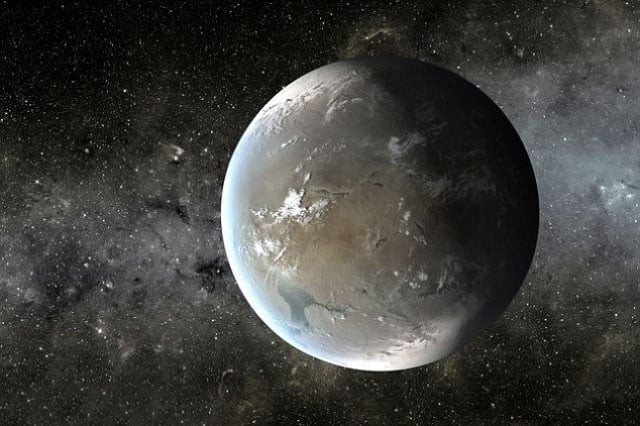Earth-like planet may support human life
Scientists believe Kepler 62f is a strong candidate for a habitable planet

Kepler-62f, shown here in an artist's rendering, is far enough from its star that its atmosphere would need a high concentration of carbon dioxide to maintain liquid water on the planet's surface. PHOTO: NASA
Kepler 62f, orbiting a star 1,200 light years away, is about 40 per cent larger than the Earth and may possess liquid water that is extremely essential for human life. It is the outermost of five planets circling a star that is smaller and cooler than the Sun.
NASA's Kepler telescope finds largest trove of exoplanets
“We found there are multiple atmospheric compositions that allow it to be warm enough to have surface liquid water. This makes it a strong candidate for a habitable planet,” said lead scientist Dr Aomawa Shields, from the University of California at Los Angeles.
New computer simulations of possible kinds of atmosphere that might be found on Kepler 62f suggest it could sustain life. Because of the planet’s distance from its host star, it would need the greenhouse effect of a thick carbon dioxide-rich atmosphere to keep its water from freezing, the research showed.
Science fiction no more: First Earth-sized planet found in ‘habitable zone’
However, certain types of orbit could allow the planet's surface temperature to rise above freezing at certain times of the year -- even with much lower levels of carbon dioxide, closer to those found on Earth.
"This might help melt ice sheets formed at other times in the planet's orbit," said Dr Shields.
More than 2,300 exoplanets outside the solar system have been identified, and a few thousand others are as-yet unconfirmed planetary candidates.
Earth is different from 700 quintillion planets in the universe
Only a couple of dozen are known to orbit the "habitable zones" of their stars, the narrow region just the right distance away to allow the existence of liquid surface water.
This article originally appeared on The Independent.



















COMMENTS
Comments are moderated and generally will be posted if they are on-topic and not abusive.
For more information, please see our Comments FAQ